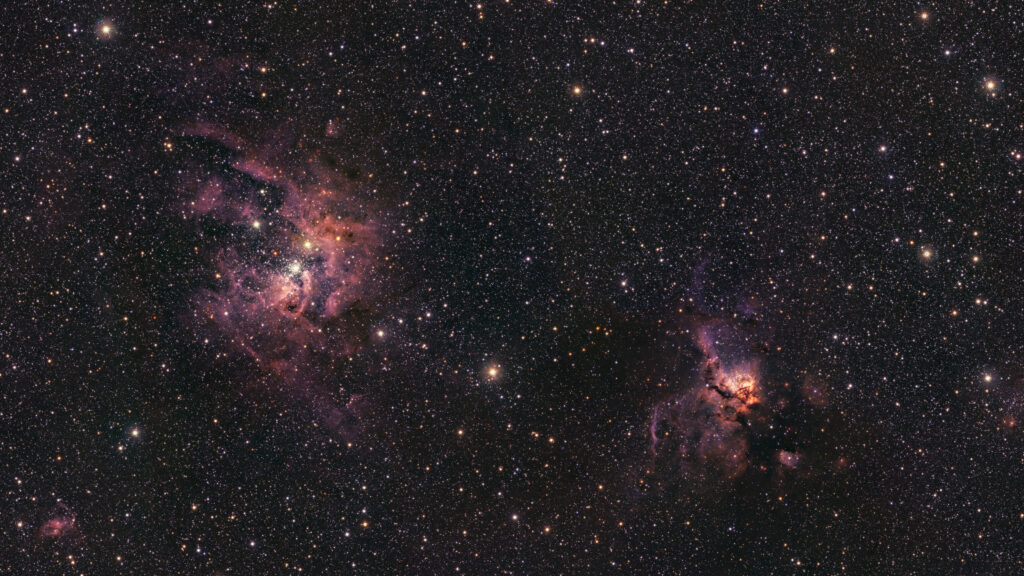The presented image was obtained by the ESO’s Visible and Infrared Survey Telescope for Astronomy (VISTA). It shows two nebulae: NGC 3603 (left) and NGC 3576 (right).

The nebulae NGC 3603 and NGC 3576 are located at distances of 22 thousand and 9 thousand light-years from Earth. New luminaries are being actively born in these extended gas-dust clouds right now. Their intense radiation and powerful stellar winds (streams of charged particles emitted by them) gradually change the shape of nebulae.
Due to the fact that these nebulae are located at a relatively small (by astronomical standards) distance from the Earth, astronomers use the opportunity to study the intensive process of star formation. It also occurs in other galaxies, but it is much more difficult to observe there because of the orders of magnitude greater distances. And since VISTA has the ability to capture infrared rays penetrating through dust, it allows distinguishing details hidden in optical photographs.
The nebulae captured in the photo were discovered by John Herschel during his trip to South Africa in 1834. The purpose of the trip was to catalog stars, nebulae and other objects of the southern sky. His work was then expanded by John Dreyer, who published his “New General Catalogue” in 1888. This is how the letters NGC are deciphered in the designation of the nebulae and many other astronomical objects captured in the photo.
Earlier we wrote about how the James Webb telescope photographed star birth.
According to https://www.eso.org
Follow us on Twitter to get the most interesting space news in time
https://twitter.com/ust_magazine
